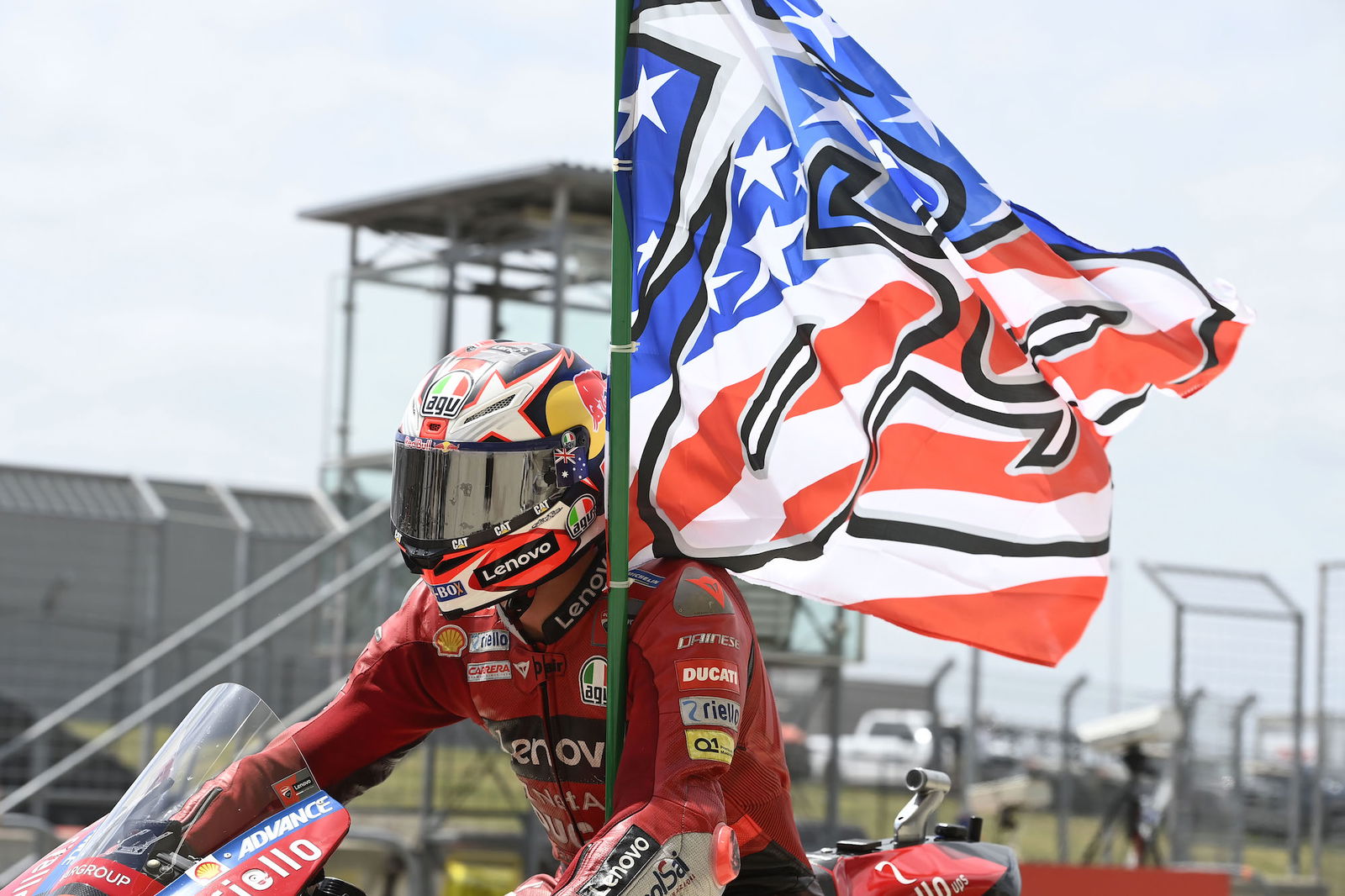MotoGP's winners and losers of the Grand Prix of the Americas
COTA hosted round four of the 2022 MotoGP season, and between riders, manufacturers, and track surfaces there were plenty of winners and plenty of losers.

The fourth round of the 2022 MotoGP World Championship saw the season’s first repeat podium finishers and the first repeat winner; but there were also bike issues and sub-par performances. So, who won, and who lost at the Grand Prix of the Americas?
Winner - Jack Miller
The first ‘winner’ is not the winner of the race, rather it is the rider who finished third. Jack Miller came into the Grand Prix of the Americas after a terrible race in Argentina where he finished 14th and generally lacked any kind of competitive pace.
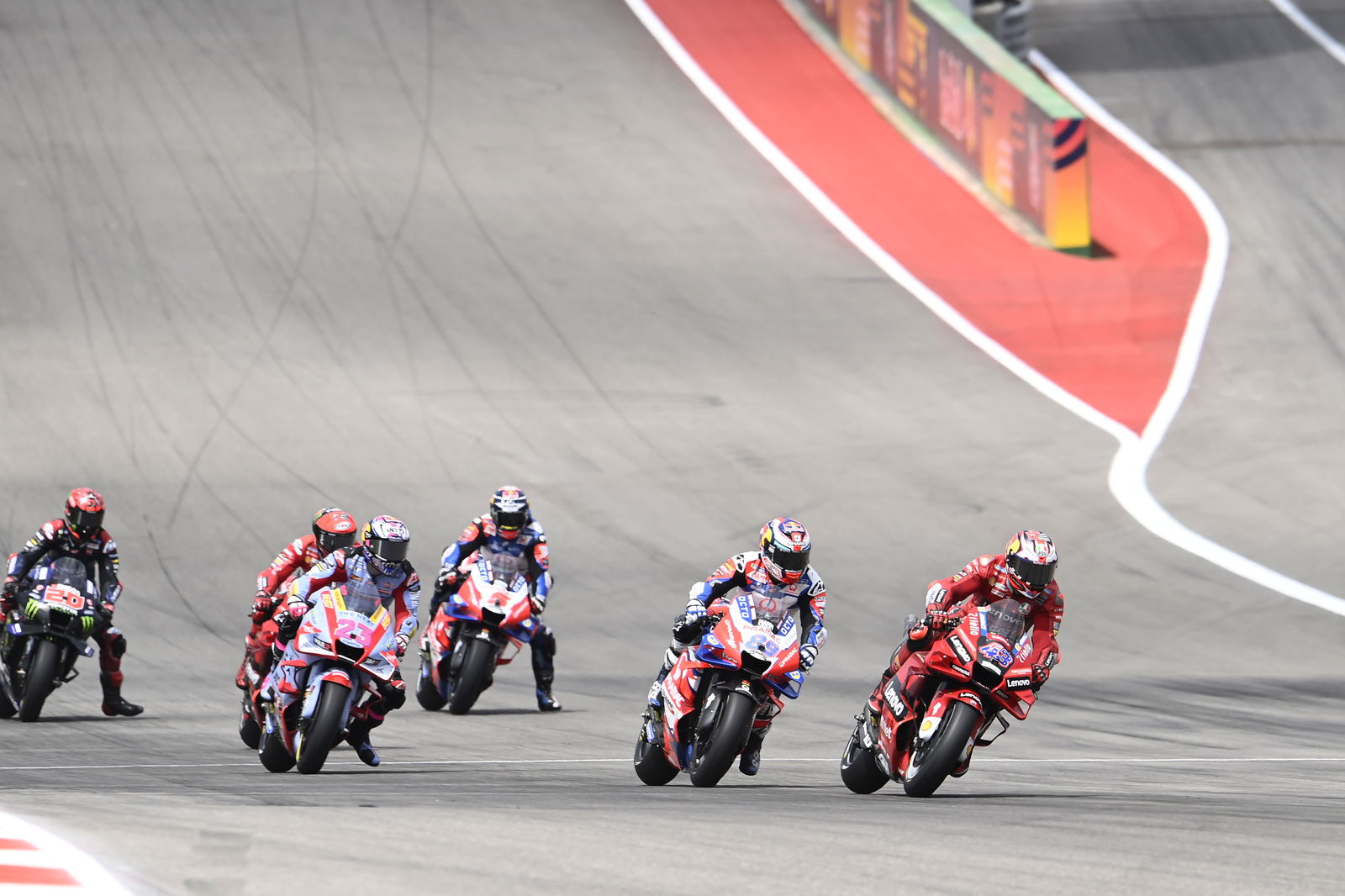
In the lead up to the race, we wrote last week about the importance of the Texas race for Miller, because the Circuit of the Americas is a strong circuit for him; and because his contractual situation means his Ducati future, and possibly even his MotoGP future, is uncertain.
Miller certainly rebounded well, though, from the tough Argentinian race. He almost qualified on pole, but took it relatively easy in the final sector of his fastest qualifying lap to make sure he completed it. He still started second on a grid that was dominated by Ducatis, with the Bologna brand filling the first five positions at the start.
The Australian started well, too, and took the early lead. That lead grew to almost one second at times, but the victory slipped from Miller’s grasp in the closing laps.
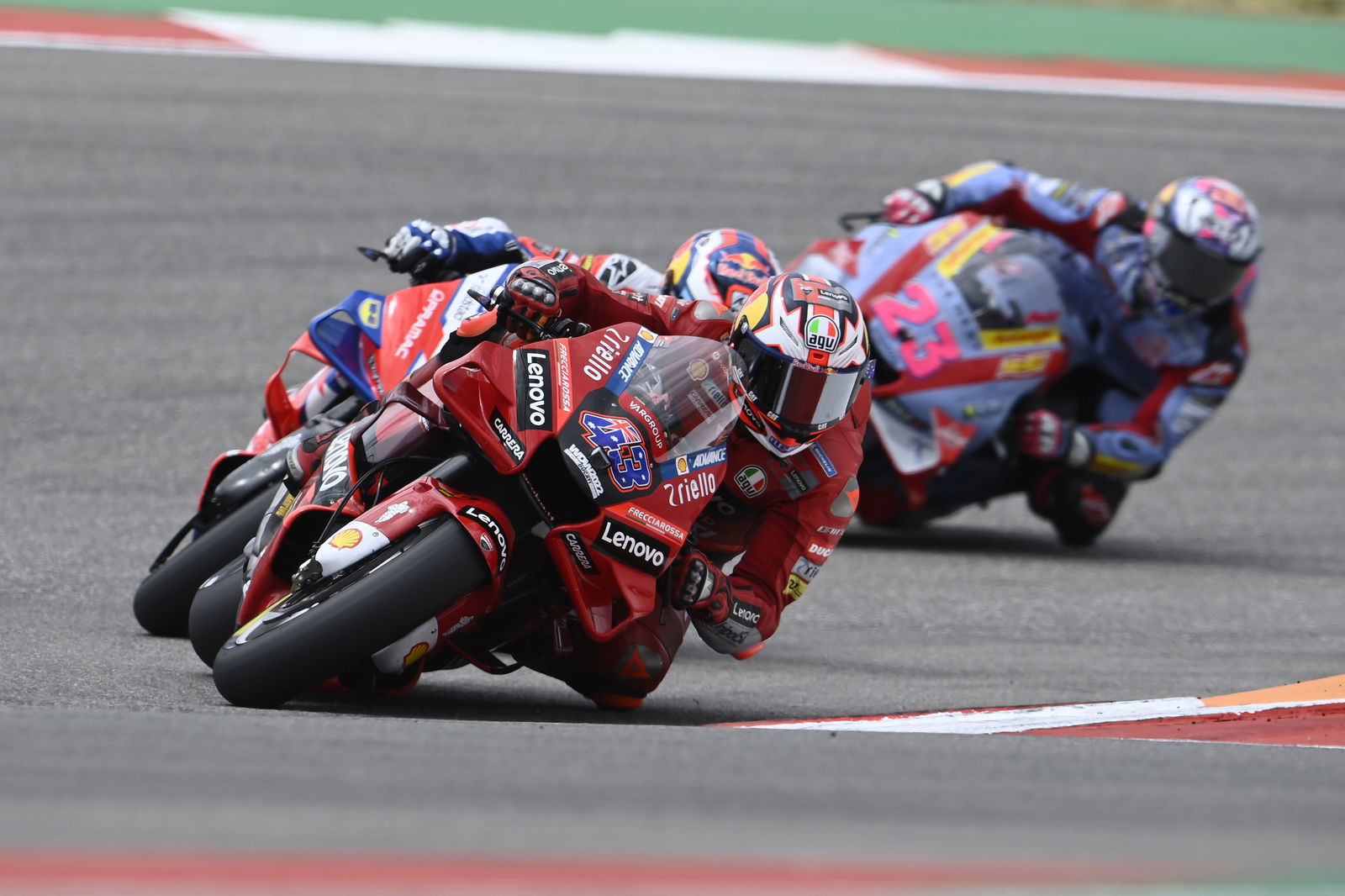
First, he was passed by Enea Bastianini, whose 2021 Ducati was faster in the straights than Miller’s GP22, and the combination of Bastianini and the GP21 was able to conserve the rear tyre better than Miller and the GP22.
Second, he was passed by Alex Rins in the penultimate corner of the final lap. We will come to Rins’ race later, but overall - especially when comparing to the other GP22 riders - Miller’s race was superb. He showed good speed, looked after the tyre better than anyone else on the same bike, was relatively consistent and did not panic when the likes of Bastianini and Rins came from behind late on.
It was an important podium for Miller for his championship chances. He now lies seventh in the standings, 30 points behind Bastianini who leads, and is now the top GP22 in the championship, despite his Argentinian disaster and Qatar retirement.

For Miller, it was also an important result for his Ducati and MotoGP future. The Australian certainly for the moment looks set to lose out to either Bastianini or Jorge Martin for the second factory Ducati seat for 2023, but there could be a space for him in the Pramac team that he had such a strong relationship with in his previous time there.
Where Miller’s season goes from here remains to be seen. Of course, the early European season was both good and bad for him in 2021, as he crashed out of Portimao, but won in both Jerez and Le Mans, but these next races will be key in determining the validity of his championship credentials.
Winner - Ducati
‘Winner’ number two of the Grand Prix of the Americas is Ducati, who locked out the top five in qualifying, won the race, and had three bikes in the top five at the chequered flag.
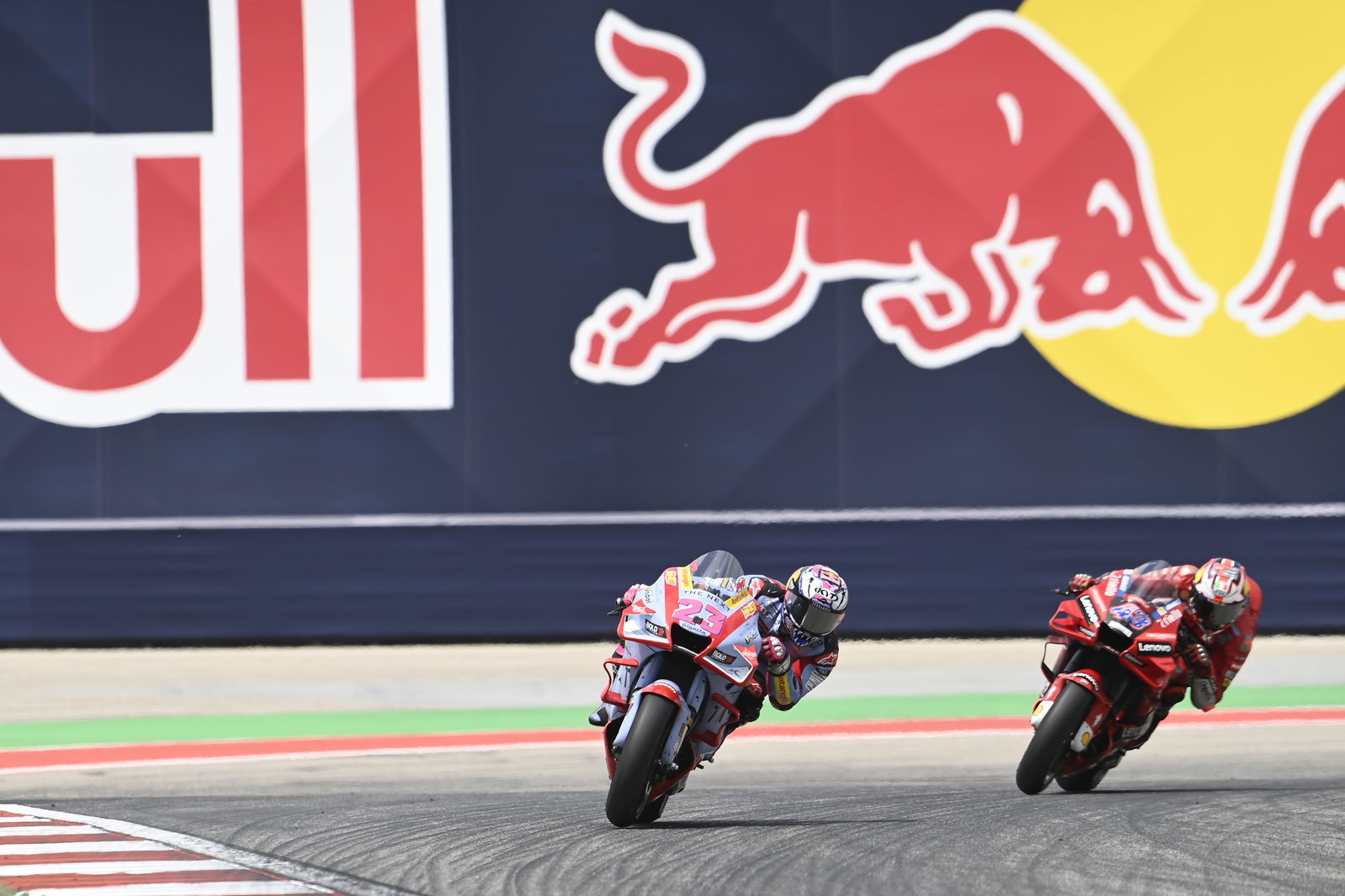
The curiosity with Ducati is that for the second time in 2022, it is the 2021 bike that is doing the winning. While Miller was third, and Jorge Martin and Johann Zarco were in podium contention in the first half of the race, the Pramac riders dropped back in the second half, and neither Miller nor Bagnaia could match the tyre consumption of those around them, while Bastianini made the tyre last better than anyone.
Certainly, there is pace in the GP22, but while Bastianini was able to lap in the 2:03s even on the last lap, Miller was in the ‘04s from lap 15; Bagnaia was in the ‘04s since lap 12 (bar one 2:03 on lap 16, which really only highlights his inconsistency); two of Martin’s final four laps were in the 2:05s; and Johann Zarco set his best lap of a 2:03.895 on lap 11, after which his best lap was a 2:03.369 which came on the final lap.

Rear grip issues have been the problem with the GP22 since the preseason, but they seem to be resolving them. The question for the GP22 riders is when the issues are finally fully resolved, will Bastianini be out of reach in the championship? And that is why Ducati are in the winners’ section: because even though they are ‘struggling,’ they have had a rider on the podium at every race, lead the championship with Bastianini, and have won 50% of the races so far.
Winner - Alex Rins
The third ‘winner’ is Alex Rins. I put Rins in the winners’ section in Argentina, too, saying that he had scored back-to-back podiums. That was untrue at the time, because I suppose I forgot about either Fabio Quartararo or Johann Zarco in Indonesia. But it was a foreshadowing.

Rins’ Texan ride was brilliant, out-braking the Ducatis into turn 11, upsetting their rhythm, and then re-passing them at turn 19 when the Desmosedicis inevitably retaliated on his turn 11 move down the back straight.
The mark of Rins’ improvement compared to last year is that when he was faced with riders who were hard to pass last year, he would generally crash. When he was chasing the leader, as he was in Portimao last year, he would crash. When he was faster than everyone else on the race track, as he was in Le Mans last year, he would crash.
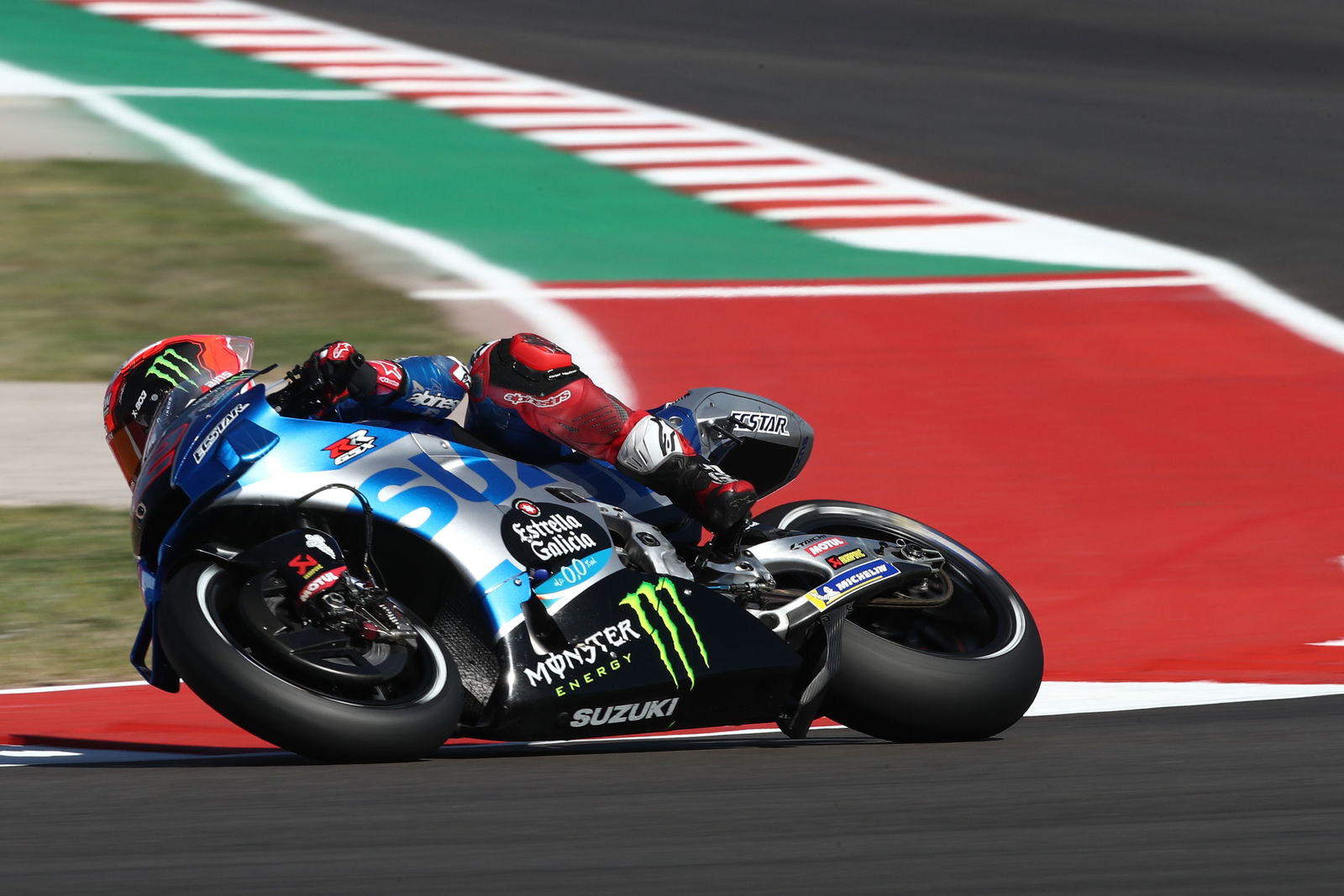
This time, in Austin, he was faster than almost everyone - even Bastianini at one point, although it was sort of a falsehood - and he faced challenges in having to pass them, because mostly they were riding Ducatis. But he did not crash. In fact, he barely made an error, and that is what allowed him to make the progress through the field as he did.
Additionally, Suzuki’s tyre management is better than the factory Ducatis, and Rins’ super-loose riding style amplifies that further (in the right-handers, he lets go of the outside bar, for example, even though he does not lean off that far with his upper-body like Jorge Lorenzo or Dani Pedrosa used to do).
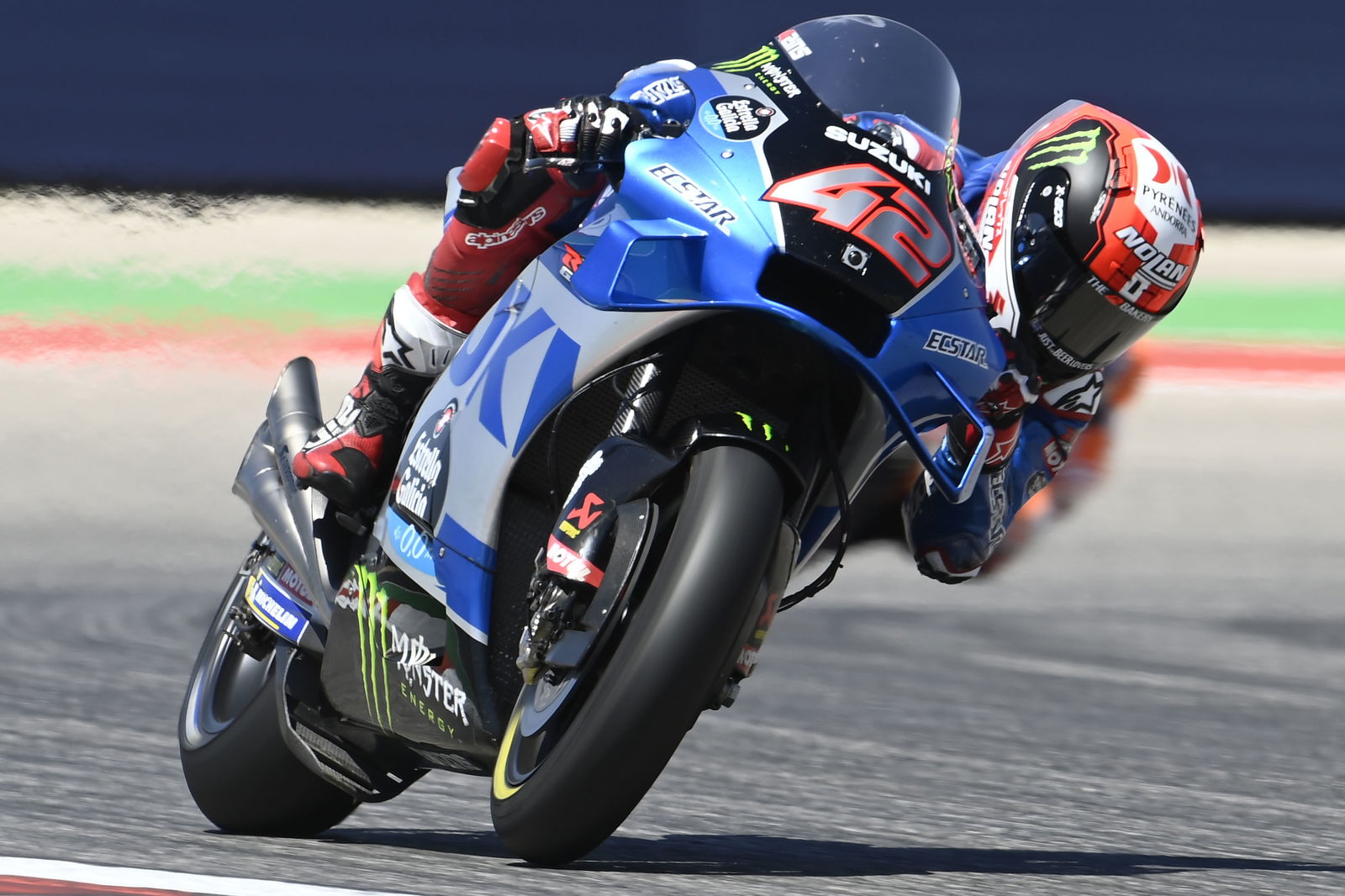
Rins could be a legitimate title contender this year, and now he sits second in the championship, only five points behind Bastianini. Is Rins the favourite? Possibly, although it depends on which perspective you take.
Rins has the advantage of being in a factory team over Bastianini. He has the advantage of having more points than Marc Marquez, Fabio Quartararo, Joan Mir and Francesco Bagnaia. He also has the advantage of being on a bike that is faster than Quartararo’s in the straights, and that turns better than the Ducati or the Honda, while also looking after its tyres better and being generally less taxing to ride. But, then, all of the other riders arguably have their own advantages over him. Only in Europe will we find out for sure.
Loser - Marc Marquez
Now, we move onto the ‘losers’, and the first is Marc Marquez. “How? He had a fantastic ride!” I hear you exclaim (maybe that’s the paranoia, or maybe that’s the paranoia). Well, yes, he did have a fantastic ride. In fact, he might have had the ride of the season to go from ninth to last to sixth while only losing two seconds to the leader in the process of passing 18 riders.

But, he could have had a not-as-fantastic ride and won the race, such was his pace.
Marquez’ pace dropped off in the final five laps or so because, in the middle of the race, while Bastianini, Miller and company were running in the high-2:03s, Marquez himself was running mid-2:03s in order to catch up. That killed his tyre, and so he had to fight with Fabio Quartararo’s quick-for-a-superbike Yamaha M1 for sixth in the end, instead of catching Francesco Bagnaia’s not-as-kind-to-the-tyres-as-last-year’s-Ducati Desmosedici GP22 for fifth.

So, instead of taking points out of everyone, Marquez lost points to all of his title rivals bar Quartararo and Jorge Martin (and Aleix Espargaro, arguably).
But, for a first race back after missing the last two through a crash, and then diplopia caused by said crash, it was not a bad result. It was the result he probably would have gotten if he had normal start and a ‘not-as-fantastic’ ride in any circuit that is not COTA, Termas or Sachsenring. The worst bit, of course, is that it seems like it was not his fault, with Marquez blaming a “technical issue” on the start for his early slump from ninth to 24th. The #93’s wait for a first podium of the season goes on to round five in Portimao.
Loser - VR46 Riders Academy
The second ‘loser’ is the VR46 Riders Academy. Their day started off badly, with Celestino Vietti crashing out of the Moto2 race (although, thanks to a crash for Aron Canet, he kept his championship lead). Then, Niccolo Antonelli retired from the Moto2 race, possibly with physical problems as he was forced to miss Friday’s running through illness.

In MotoGP, Marco Bezzecchi crashed out early, and his teammate Luca Marini finished nearly 30 seconds off the win in 17th. Just in front of Marini was Franco Morbidelli in 15th - he finished 23 seconds behind his teammate. The final MotoGP class VR46 rider, Francesco Bagnaia, finished fifth, but was also beaten by his teammate, and the bike that he won three races with last season.
Of particular concern are Marini and Morbidelli. While Bagnaia seems like he could win in Portimao in two weeks if he has a good weekend, a ‘good weekend’ seems impossible for either the 2020 Moto2 runner-up, or the 2020 MotoGP runner-up at the minute.

The problem for Morbidelli is that he does not have the mastery of the M1 that Quartararo has, and therefore is unable to overcome its weak points in the same way as the Frenchman. This can sort itself in time, as Morbidelli becomes more familiar with the current-generation M1 compared to the 2019-spec he was successful with before, but it is not guaranteed.
Marini’s problem might be more fundamental- maybe even biological. This is because Marini’s biggest issue is rear grip, and consequently rear tyre wear. Like his half-brother, Valentino Rossi, Marini is one of the taller riders in MotoGP and, like Rossi, his primary problem is the same. Of course, Marini is also not aided by the GP22’s current rear grip deficit, but at the same time he is clearly struggling more than the other GP22 riders - that has been clear in both Texas and Termas.
We will see as the season goes on whether Marini can solve his rear tyre woes, but for now it certainly looks a rather bleak reality.
Loser - Circuit of the Americas
The final ‘loser’ is also a ‘winner’, as it turns out. It is also the track, the Circuit of the Americas, which enjoyed its best MotoGP race since it came onto the calendar in 2013 (with the possible exception of 2019).
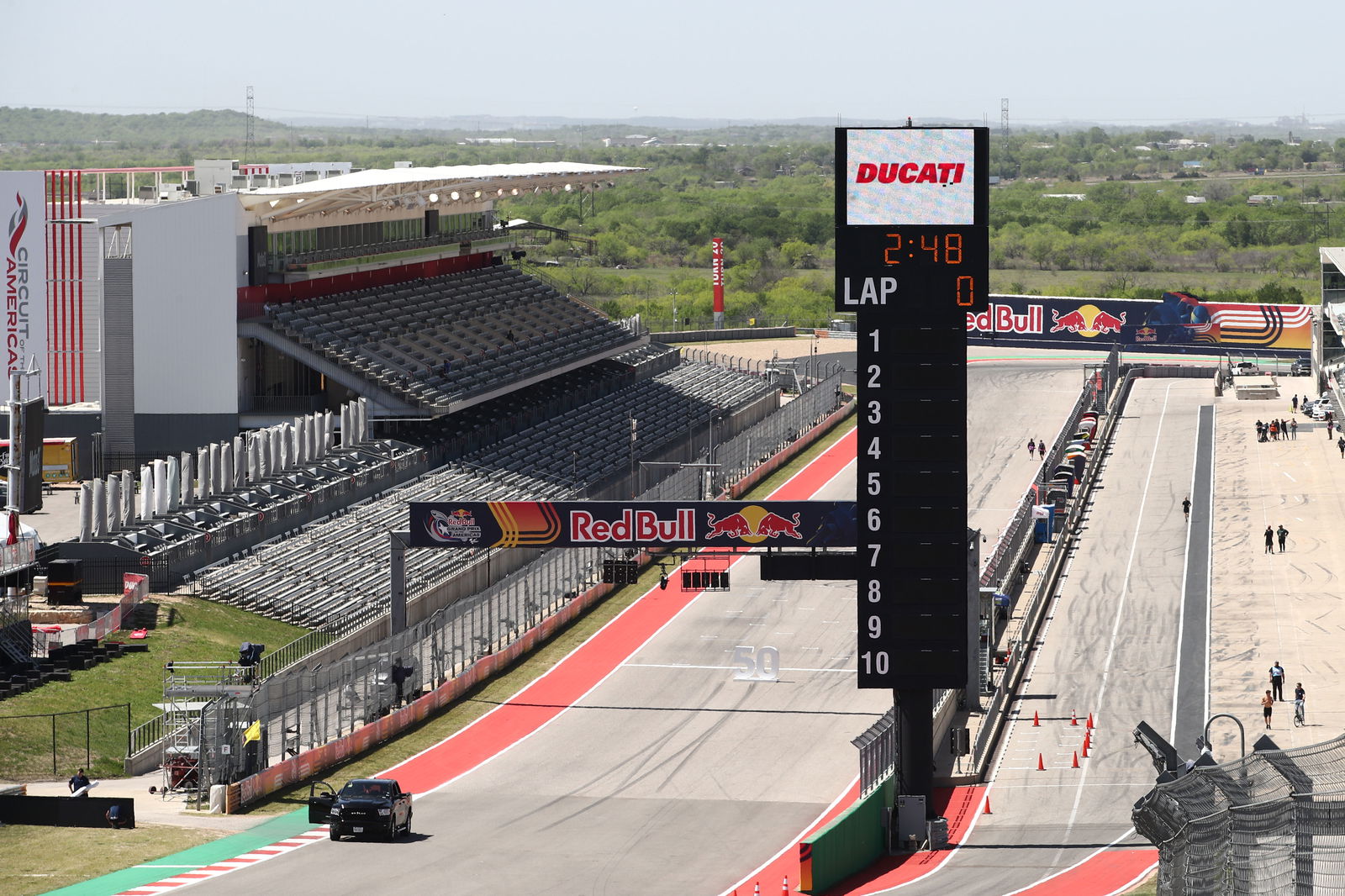
It was not the closest MotoGP race in history, but that is more the fault of Enea Bastianini and his late-race Michelin mastery. Another ‘but’ is that, for most of the race, the top six were all in contention for the win and the podium. This is the standard of MotoGP, but not the standard of COTA, which usually puts on pretty strung out races, even if you ignore Marc Marquez.
Part of this is down to the parity in MotoGP - although it is true that only two manufacturers featured in the top five at the finish - but it is also down to the improvements made to the track surface over the winter.
While the surface was not perfect, the work to improve it was certainly successful overall, as was the installation of a concrete foundation beneath sector one to combat the subsidence issues the circuit has always faced, and will continue to face.
It was not a perfect job, though. The bump into turn two is still there, the bump out of turn nine is still there, as well as the one in turn 10 (although that one in particular is much improved compared to previous years). Also, the back straight was not resurfaced at all, so that part of the track is still quite bad, but from turn 12 to 16 is also a lot better - even if the entry to turn 15 still has a significant bump.
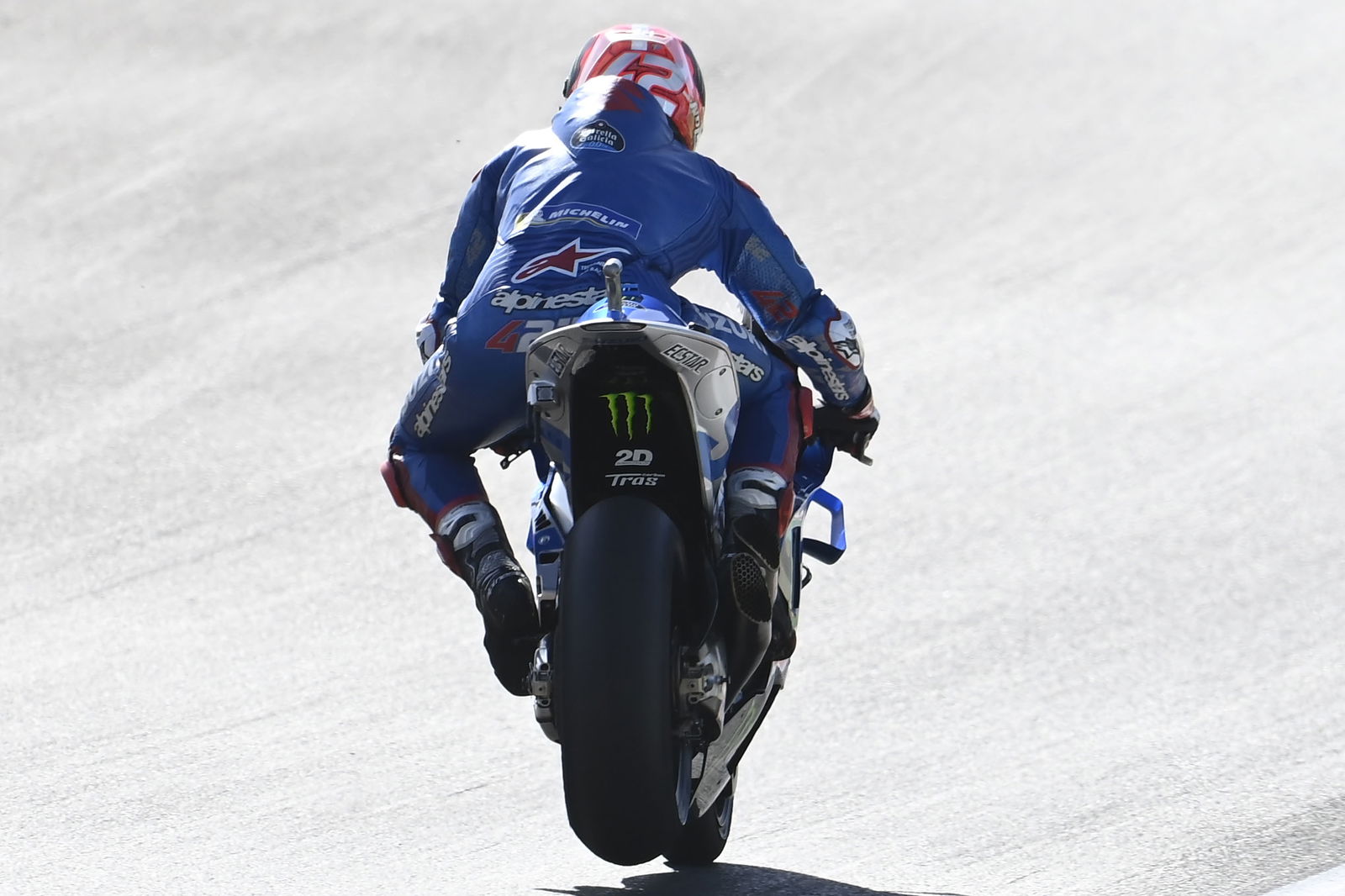
The point is, the track is much more rideable now than it was in 2021, and that means it is safer and that it races better. Racers are racing, rather than surviving.
However, not all of the circuit is repaired. As well as the back straight, turns 17 and 18 are still the same as last year, as well as the entry to turn 19 where Quartararo crashed in qualifying, and the run into turn one is still littered with braking bumps. So there is still work to do, and while that work is being done it is likely that the work that has already been done will deteriorate.
So, while the Circuit of the Americas is not so bad now, its sustainability as a MotoGP track is going to be called into question once again in the future. How far in the future is uncertain, as is the ability of the circuit to act when that question is asked once again.

